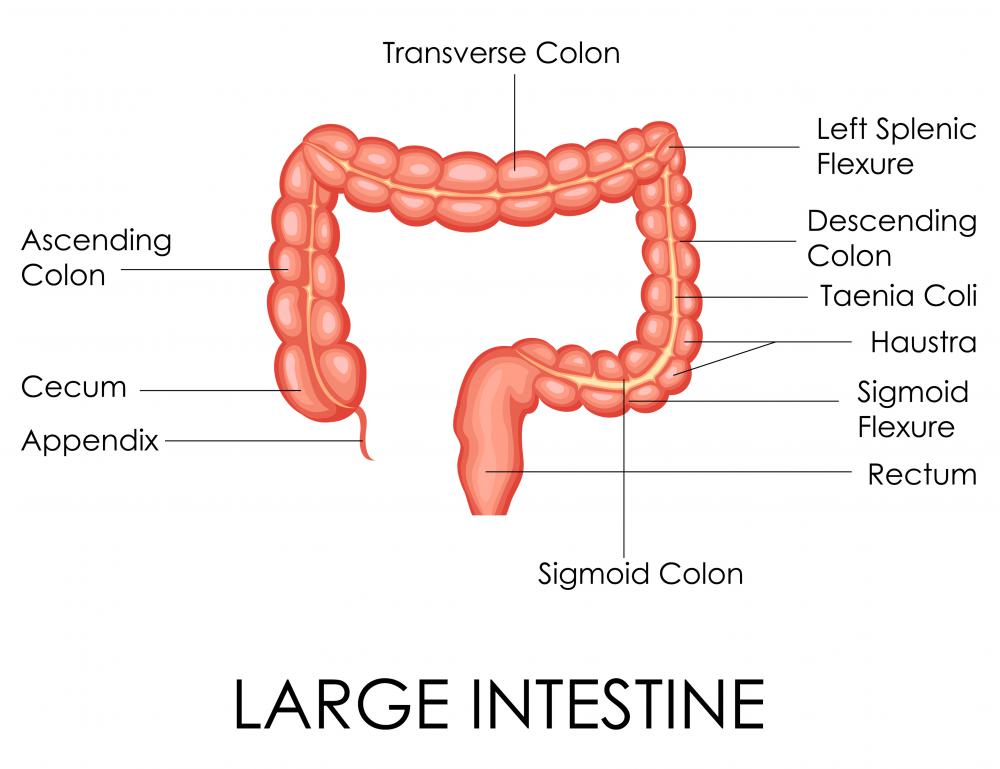At WiseGEEK, we're committed to delivering accurate, trustworthy information. Our expert-authored content is rigorously fact-checked and sourced from credible authorities. Discover how we uphold the highest standards in providing you with reliable knowledge.
What is the Hindgut?
The hindgut is the posterior or final portion of the digestive system, preceded by the foregut and the midgut. It comprises the lower half of the large intestine: the latter third of the transverse colon, the entire descending colon and sigmoid colon, and the rectum. The hindgut is the section of the alimentary canal that is responsible for the absorption of water and the elimination of waste from the body in the form of undigested food.
Gut refers to the digestive or gastrointestinal tract as well as the accessory digestive organs, which all together make up the digestive system. The foregut is the upper portion of this system, and includes the mouth, esophagus, stomach, liver, pancreas, gallbladder, and the first two segments of the duodenum, the beginning of the small intestine. Next is the midgut, the intermediate portion of the digestive tract. It includes the latter two segments of the duodenum and the remaining sections of the small intestine, the jejunum and ileum, as well the upper half of the large intestine: the cecum, ascending colon, and first two-thirds of the transverse colon.

The final third of the transverse colon, which is differentiated from the proximal two-thirds by the fact that it receives its blood supply from the inferior mesenteric artery rather than the superior mesenteric artery, marks the beginning of the hindgut. This is the portion of the colon that crosses the torso horizontally, just below the stomach and other digestive organs, before turning 90 degrees at the bend known as the splenic fixture to form the descending colon. After descending into the pelvis, it then turns 90 degrees again to form another horizontal section of colon, the sigmoid colon. Finally, it turns downward once more to form the rectum, which takes waste out of the body via the anal sphincter.

Unlike the previous two sections of the gut, the hindgut is not concerned with the breakdown and absorption of nutrients. While it is the place where water and some electrolytes are absorbed — namely salt, potassium, and some fat-soluble vitamins like vitamin K — its main job is the removal of undigested food. Once bacteria in the colon turn this undigested food or chyme, initially liquid in form, into solid waste via fermentation, smooth muscle in the wall of the intestine pushes this fecal matter into the rectum. The rectum acts as a temporary storage site for the feces until filled to capacity, at which point stretch receptors signal the brain to signal the muscles of defecation to contract, eliminating this waste from the hindgut.
AS FEATURED ON:
AS FEATURED ON:













Discuss this Article
Post your comments